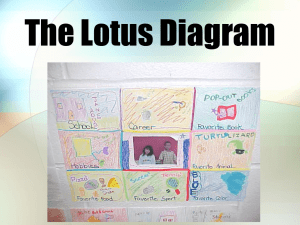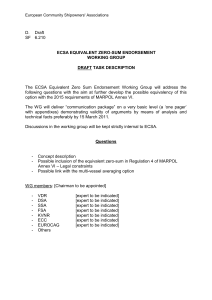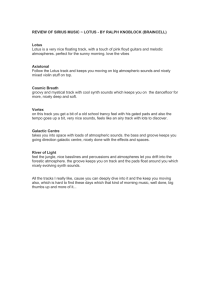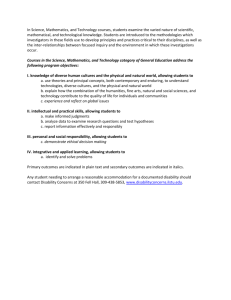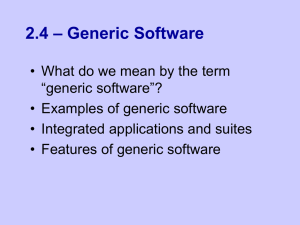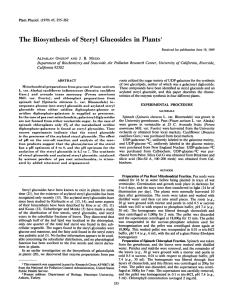Supporting Information Legends
advertisement
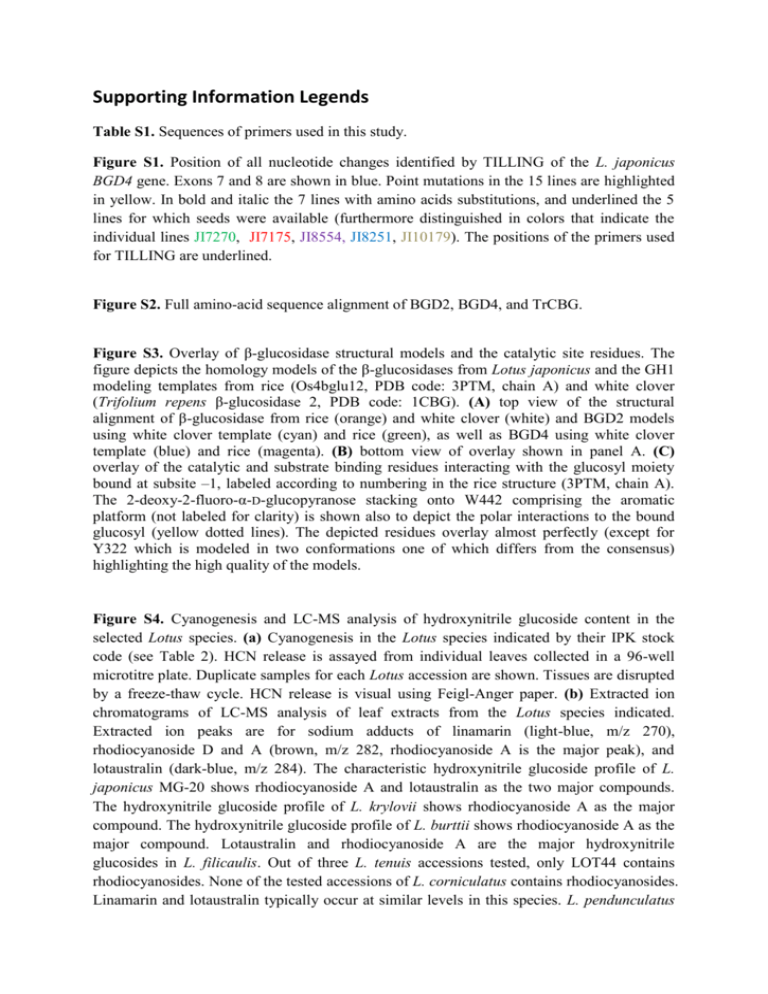
Supporting Information Legends Table S1. Sequences of primers used in this study. Figure S1. Position of all nucleotide changes identified by TILLING of the L. japonicus BGD4 gene. Exons 7 and 8 are shown in blue. Point mutations in the 15 lines are highlighted in yellow. In bold and italic the 7 lines with amino acids substitutions, and underlined the 5 lines for which seeds were available (furthermore distinguished in colors that indicate the individual lines JI7270, JI7175, JI8554, JI8251, JI10179). The positions of the primers used for TILLING are underlined. Figure S2. Full amino-acid sequence alignment of BGD2, BGD4, and TrCBG. Figure S3. Overlay of β-glucosidase structural models and the catalytic site residues. The figure depicts the homology models of the β-glucosidases from Lotus japonicus and the GH1 modeling templates from rice (Os4bglu12, PDB code: 3PTM, chain A) and white clover (Trifolium repens β-glucosidase 2, PDB code: 1CBG). (A) top view of the structural alignment of β-glucosidase from rice (orange) and white clover (white) and BGD2 models using white clover template (cyan) and rice (green), as well as BGD4 using white clover template (blue) and rice (magenta). (B) bottom view of overlay shown in panel A. (C) overlay of the catalytic and substrate binding residues interacting with the glucosyl moiety bound at subsite –1, labeled according to numbering in the rice structure (3PTM, chain A). The 2-deoxy-2-fluoro-α-D-glucopyranose stacking onto W442 comprising the aromatic platform (not labeled for clarity) is shown also to depict the polar interactions to the bound glucosyl (yellow dotted lines). The depicted residues overlay almost perfectly (except for Y322 which is modeled in two conformations one of which differs from the consensus) highlighting the high quality of the models. Figure S4. Cyanogenesis and LC-MS analysis of hydroxynitrile glucoside content in the selected Lotus species. (a) Cyanogenesis in the Lotus species indicated by their IPK stock code (see Table 2). HCN release is assayed from individual leaves collected in a 96-well microtitre plate. Duplicate samples for each Lotus accession are shown. Tissues are disrupted by a freeze-thaw cycle. HCN release is visual using Feigl-Anger paper. (b) Extracted ion chromatograms of LC-MS analysis of leaf extracts from the Lotus species indicated. Extracted ion peaks are for sodium adducts of linamarin (light-blue, m/z 270), rhodiocyanoside D and A (brown, m/z 282, rhodiocyanoside A is the major peak), and lotaustralin (dark-blue, m/z 284). The characteristic hydroxynitrile glucoside profile of L. japonicus MG-20 shows rhodiocyanoside A and lotaustralin as the two major compounds. The hydroxynitrile glucoside profile of L. krylovii shows rhodiocyanoside A as the major compound. The hydroxynitrile glucoside profile of L. burttii shows rhodiocyanoside A as the major compound. Lotaustralin and rhodiocyanoside A are the major hydroxynitrile glucosides in L. filicaulis. Out of three L. tenuis accessions tested, only LOT44 contains rhodiocyanosides. None of the tested accessions of L. corniculatus contains rhodiocyanosides. Linamarin and lotaustralin typically occur at similar levels in this species. L. pendunculatus only contains a trace amount of lotaustralin, lacks hydroxynitrile glucoside hydrolyzing activity and is acyanogenic. Linamarin is the dominant hydroxynitrile glucoside compound in L. ornithopodioides. Figure S5. Amino acid alignment of the BGDs amplified from Lotus spp. Amino acids alignment of the partial BGD cDNA fragments amplified from the various Lotus species indicated. The two regions containing the conserved catalytic motifs are indicated in orange. The position of the G, V, or S residue at position 211 is also indicated in color. The sequences of BGD2 and BGD4 from L. japonicus are included, as is the sequence of TrCBG from T. repens. Sequences are aligned with ClustalW2. Figure S6. Phylogenetic tree with dN/dS ratios. The DNA based phylogenetic tree presented in Figure 5b was used to calculate the dN/dS ratios for the individual branches of the tree using the codeml program of the PAML package (Yang, 2007). A dN/dS < 1 suggests purifying selection, dN/dS = 1 neutral selection, and dN/dS > 1 positive selection. For some branches the dN/dS ratio could not be calculated due to the absence of silent or replacement substitutions for that branch, and this is indicated with --. Symbols in front of the species name indicate the type of β-glucosidase sequence isolated as indicated in Table 2: ● BGD2type sequence, ○ BGD4-type sequence, ♦ BGD with G211.
